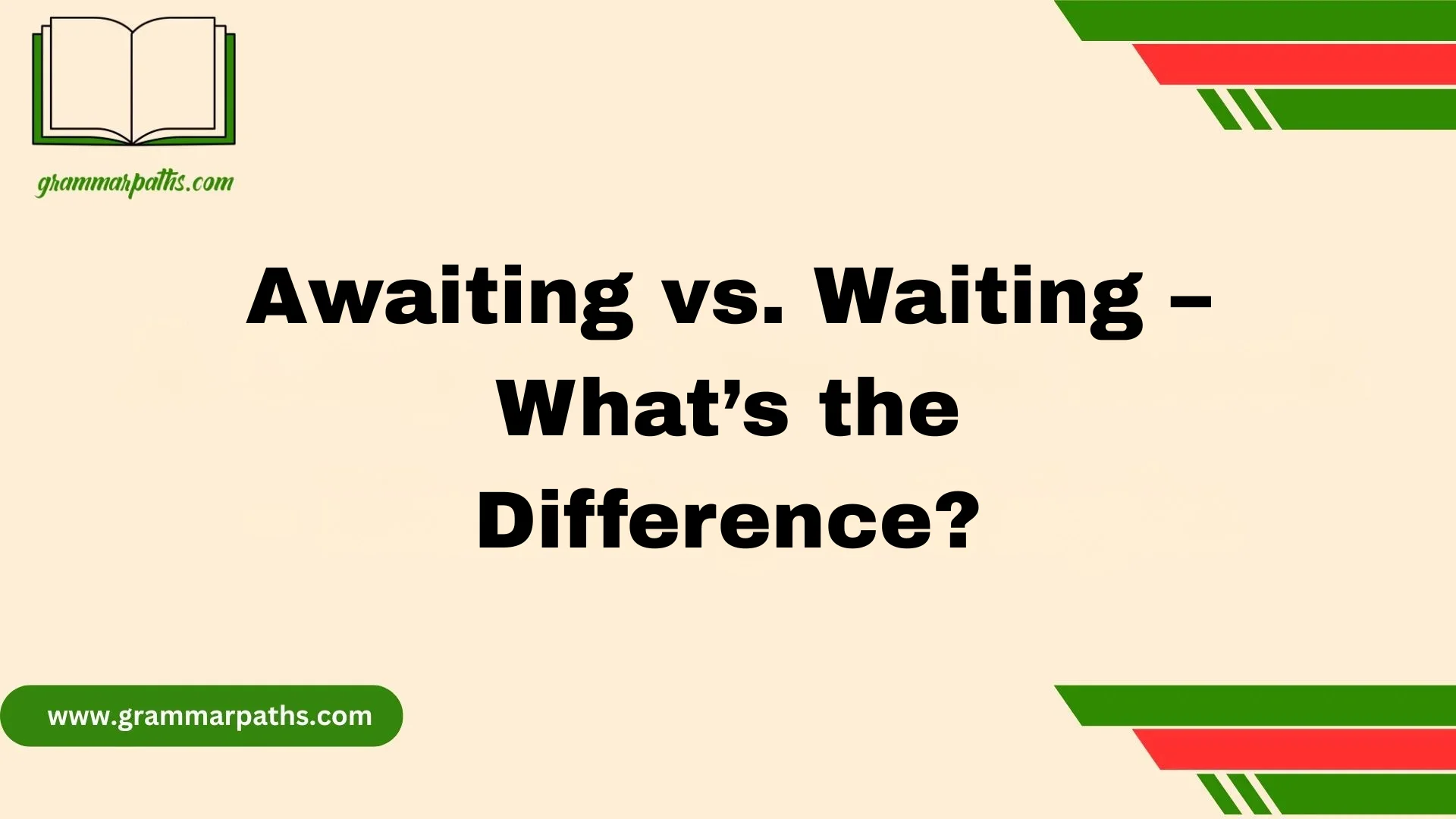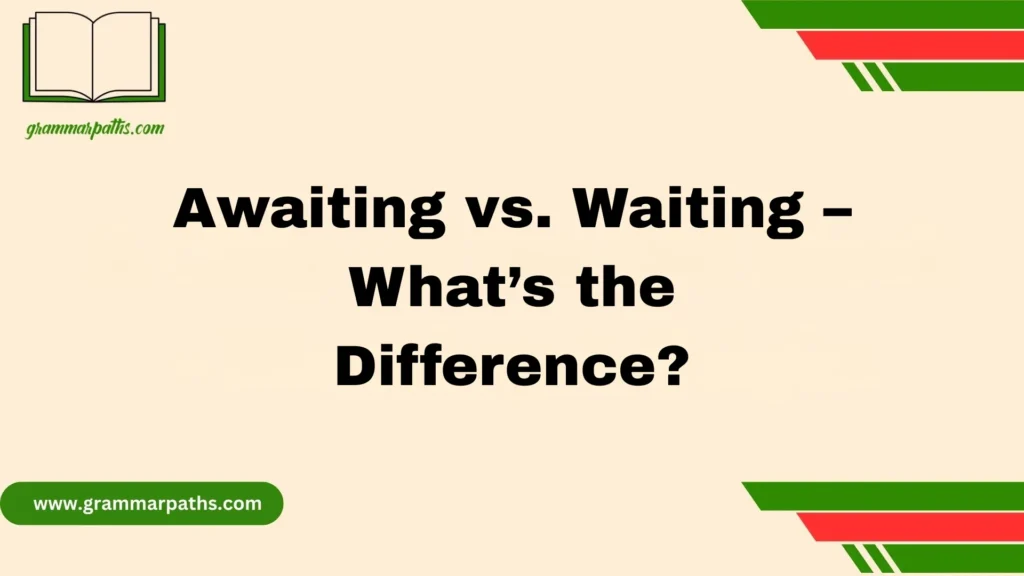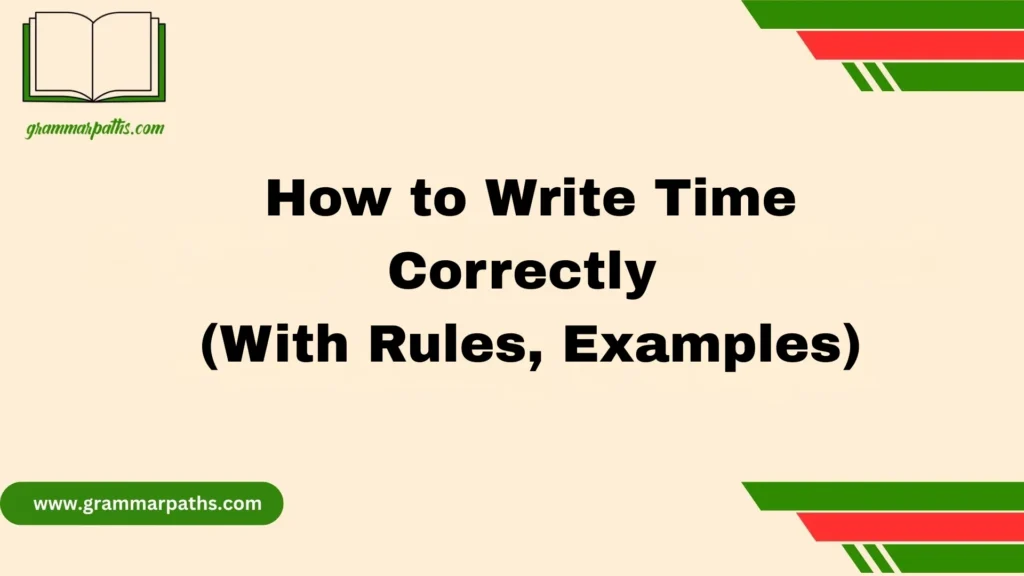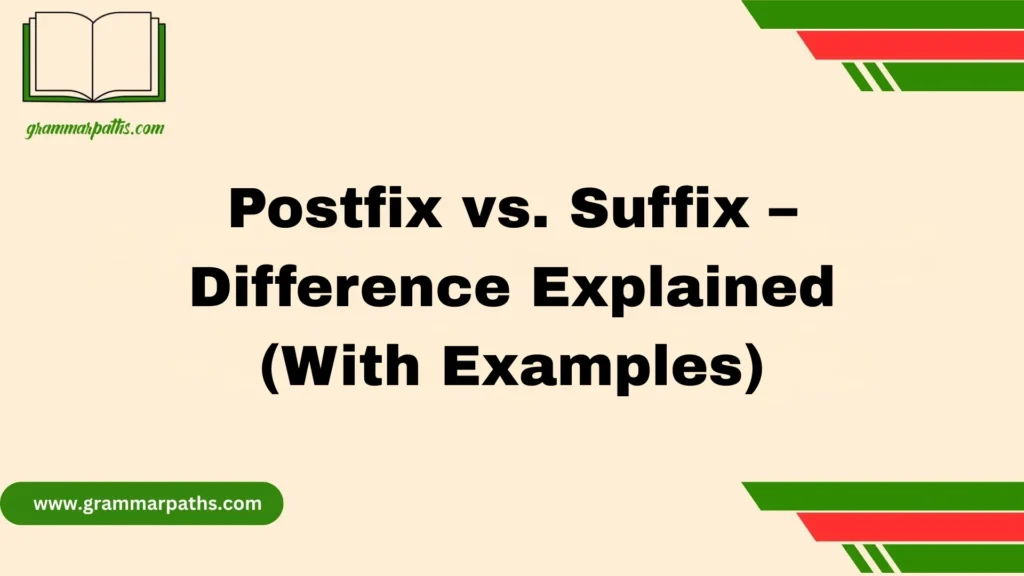When it comes to the English language, words often seem similar but carry subtle differences in meaning, usage, and tone. A common example that creates confusion is the choice between awaiting vs. waiting. At first glance, both words appear interchangeable because they refer to a sense of expectation, delay, or time spent before something happens. However, in practice, they serve slightly different purposes depending on grammar rules, formality, and context.
The term awaiting is generally considered more formal and is often used in professional communication, official documents, or literary writing. For instance, one might say, “The company is awaiting your response,” which sounds more polished and authoritative. On the other hand, waiting is more common in everyday English and is flexible enough to fit casual conversations, daily activities, or even spoken language. Saying, “I am waiting for my friend” feels natural and conversational.
Understanding the contrast between awaiting vs. waiting helps improve word choice, clarity, and writing style. Whether drafting an email, preparing business reports, or enhancing spoken fluency, recognizing when to use each term makes your communication more effective. This distinction highlights the importance of choosing words not just for their meaning, but also for their tone and suitability.
Quick Summary?
The words “awaiting” and “waiting” both relate to the idea of expecting something, but they’re used differently. Awaiting is more formal and is usually followed directly by a noun, such as awaiting approval or awaiting results, making it common in professional or written contexts. On the other hand, waiting is less formal and often followed by “for” plus a noun or pronoun, like waiting for the bus or waiting for her, which makes it more natural in everyday conversation. In short, awaiting fits formal writing, while waiting is better for casual speech.
Core Definitions: Awaiting vs. Waiting
The first step to understanding the difference is to look at their basic meanings and functions.
- Waiting
- Everyday verb used to express the action of staying until something happens.
- Can be used with or without a direct object.
- Works in casual, formal, and professional settings.
- Example: I’m waiting for the bus.
- Awaiting
- Slightly more formal than waiting.
- Always requires a direct object.
- Used more often in professional, legal, or literary contexts.
- Example: The committee is awaiting the final report.
Here’s a quick comparison chart for clarity:
| Feature | Waiting | Awaiting |
| Direct object needed? | No | Yes |
| Formality level | Neutral, flexible | Formal, professional |
| Common in casual speech? | Yes | Rare |
| Prepositions required | Often (wait for, wait on) | Never (await for ❌) |
| Example | I’m waiting for dinner. | I’m awaiting dinner. |
Grammatical Foundations
Understanding the grammar rules behind these two words makes it easier to see why they can’t always be swapped.
- Await is a transitive verb, meaning it always takes a direct object. You must be awaiting something.
- Correct: She is awaiting her test results.
- Incorrect: She is awaiting.
- Wait is an intransitive verb when used alone but can become transitive with the right preposition.
- Example (intransitive): He waited patiently.
- Example (transitive with preposition): He waited for the train.
- Prepositions matter with wait:
- Wait for: expecting something (I’m waiting for my turn.)
- Wait on: serving someone (The waiter waited on the guests.)
- Wait at: location-focused (She waited at the station.)
Notice that await does not need a preposition. Saying “await for” is always incorrect.
Formality and Tone Differences
One of the most important distinctions between the two words is tone.
- Awaiting feels professional, official, or even literary.
- Example: We are awaiting the results of the investigation.
- Common in:
- Legal documents
- Business emails
- Academic writing
- Waiting feels natural in everyday conversation.
- Example: I’m waiting for my coffee.
- Common in:
- Texting
- Conversations with friends
- Informal writing
Think of it this way: “awaiting” dresses in a suit, while “waiting” shows up in jeans and a T-shirt.
Practical Usage in Real Life
Daily Communication
You’ll hear waiting far more often in casual conversations:
- I’m waiting outside.
- We waited an hour for the movie to start.
Professional/Business Writing
Awaiting often appears in emails, job applications, and formal reports.
- We are awaiting your reply regarding the proposal.
- The case is awaiting review by the court.
Literature and Official Contexts
Writers sometimes choose awaiting to create a formal or dramatic tone:
- The soldiers stood, awaiting orders.
- The town was awaiting its fate as the storm approached.
Case Study: Workplace Email vs. Friendly Chat
- Workplace Email: We are awaiting the updated budget figures before moving forward.
- Friendly Chat: I’m waiting for Tom to text back.
Both are correct, but the choice depends entirely on audience and context.
Common Mistakes Learners Make
Even advanced English learners trip up on these words. Here are the most common mistakes:
- Saying await for (redundant and incorrect)
- Using awaiting without a direct object (She is awaiting.)
- Overusing awaiting in casual settings (sounds stiff and unnatural)
- Confusing wait on with wait for (very different meanings)
- I am awaiting your decision.
- I am waiting for your decision.
- The team waited at the conference hall.
Memory Tricks and Tips
Need a quick way to remember? Try these mnemonics:
- Await = Always with object
- Wait = With or without object
- Await = Formal → Think “A” for Academic or Authority
- Wait = Casual → Think “W” for Weekend conversation
| Question | Use Awaiting | Use Waiting |
| Is there a direct object? | ✅ Yes | Optional |
| Is the tone formal/professional? | ✅ Yes | Sometimes |
| Is it casual speech? | ❌ Rare | ✅ Yes |
| Does it need a preposition? | ❌ No | ✅ Often |
Side-by-Side Examples
Let’s look at sentences side by side to see how they differ:
| Context | Using Awaiting | Using Waiting |
| Business Email | I am awaiting your response. | I am waiting for your response. |
| Daily Conversation | ❌ (too formal) | I’m waiting for my friend. |
| Literature | She was awaiting her destiny. | She was waiting for her destiny. |
| Legal | The case is awaiting trial. | The case is waiting for trial. (less formal) |
Notice that in some cases, both work, but the tone shifts.
Conclusion
In summary, while awaiting and waiting may seem similar, they are not always interchangeable. Awaiting is more formal, often used in written communication, official statements, or literary contexts, whereas waiting is more casual and widely used in everyday conversations. By understanding this subtle difference, you can choose the right word depending on the tone, audience, and setting of your communication. Mastering these distinctions enhances not only your grammar but also your overall language fluency.
FAQs
Q1: Can “awaiting” and “waiting” be used interchangeably?
A1: Sometimes, yes, but not always. Awaiting is more formal, while waiting is neutral and casual.
Q2: Which is correct: “I am awaiting for your reply” or “I am awaiting your reply”?
A2: The correct form is “I am awaiting your reply”. The word await does not require “for.”
Q3: Is “awaiting” old-fashioned?
A3: No, it is still widely used in formal English, especially in letters, emails, and official communication.
Q4: Can “waiting” be used in formal writing?
A4: Yes, but awaiting is generally preferred in professional documents for a more polished tone.
Q5: Which is more common in spoken English?
A5: Waiting is far more common in daily conversations, while awaiting is rarely used in speech.

Emma Brooke is a passionate language expert and contributor at GrammarPaths.com, where she helps learners navigate the complexities of English grammar, idioms, and effective writing. With a strong academic background and years of teaching experience, Emma excels at turning tricky grammar rules into simple, practical lessons that readers can easily grasp.










